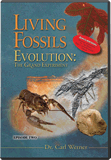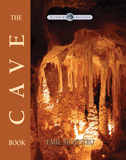Grounds for Reevaluation
The fossil of a creature resembling a groundhog that lived during the time of dinosaurs has become an anomaly for evolutionists in their attempt to reconstruct the history of mammals.1
The need to revise their theories does not bother evolutionary researchers.
The fossil skull of Vintana sertichi was found in Madagascar in a large block of sandstone along with many fossilized fish and was given a supposed age of 66–72 million years. The extinct rodent-like creature displayed some mammalian traits that are primitive by evolutionary standards. That is, its skull resembled those of multituberculates, a diverse group of rodent-like mammals found in Cretaceous layers that evolutionary scientists consider “primitive.” But the rodent’s bone structure also gives evidence that it possessed characteristics that were more advanced than expected. (For example, it apparently had high-frequency hearing and a keen sense of smell.)
Vintana is prompting further adjustments to the ever-changing evolutionary story of mammalian development. To explain such advanced traits, researchers are pushing their timeline of mammalian history back a few million years to give more time for Vintana’s odd mix of traits to develop.
The need to revise their theories does not bother evolutionary researchers. They are so convinced of their worldview that stunning discoveries like this one do not cause them to rethink their assumptions.
Biblical creationists have infinitely more reason to feel secure in their worldview. We rely on the ultimate authority, the Word of God, rather than people’s ideas about the past. Even when the correct creation interpretation is not immediately clear, we can be excited about each new discovery because it provides clues to teach us more about our Creator.
As for Vintana, we know that God designed animals to live together in unique environments in the pre-Flood world that don’t always resemble environments found today. Vintana’s unique mix of traits was likely just what it needed to thrive in the place God made it for. This particular specimen died in the catastrophic global Flood, which befell the earth about 4,350 years ago, and was memorialized in stone. Representatives of the Vintana kind were preserved on Noah’s Ark, but the creature apparently became extinct sometime after the Flood. The Creation-Flood model makes sense of the evidence.
Answers Magazine
April – June 2015
The eruption of Mount Saint Helens in the 1980s changed how we view catastrophe; on its thirty-fifth anniversary, we examine what we’ve learned since then.
Browse Issue SubscribeRecommended Resources

Answers in Genesis is an apologetics ministry, dedicated to helping Christians defend their faith and proclaim the good news of Jesus Christ.
- Customer Service 800.778.3390
- © 2024 Answers in Genesis






